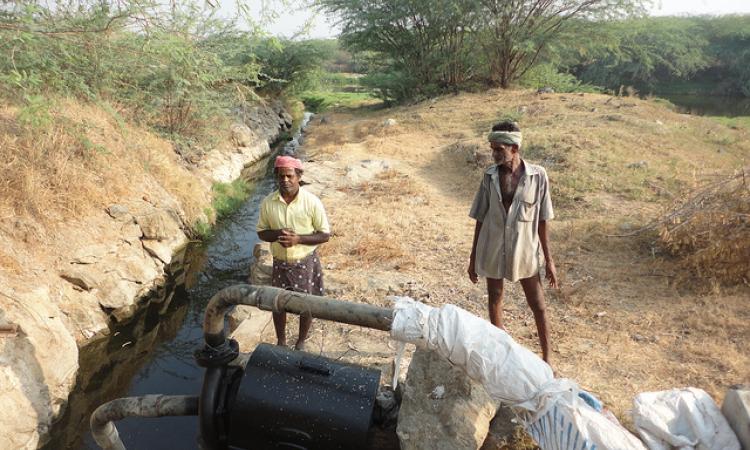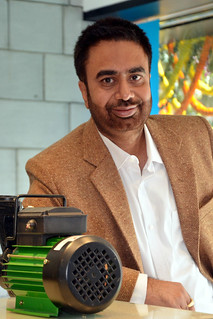
The increasing gap in water availability in India has encouraged the growth of the water industry. Be it the bottling sector, filtration or wastewater recycling, all segments related to water are seeing a phenomenal upsurge. The sector is expected to receive investments of Rs 18,000 crore in the next three years according to a study conducted by the consultancy firm EA Water. No wonder then that e-commerce platforms are also vying for their share of the pie!
Chandigarh-based Pumpkart got into the limelight when Google CEO Sundar Pichai praised the idea at a ‘Digital India’ dinner for top tech CEOs in California last year. We talk to Pumpkart’s founder K S Bhatia about the platform and future plans.
How was the idea of Pumpkart conceptualised? What were the triggers?
I have been in the water industry for the last 18 years but was mainly involved in big contracts. My 12-year-old son who is very tech savvy, suggested that I sell water pumps online. I was apprehensive about whether people would buy pumps online but he did the research and found out that there was no other player in this sector. He even gifted me the url www.pumpkart.com and kept pushing me. I knew the industry is skewed and unorganised. We did formal market research and found that unorganised players account for over 16 per cent of the market. Also, in my experience as a trader, I found that domestic buyers are mainly dependent on plumbers, who fleece them by fudging the bills. Many a times, pumps are sold at 50 percent higher cost.
Who are the people buying these pumps?
Most of the business is coming from domestic buyers of Maharashtra, Tamil Nadu, Karnataka and Kerala . North India has reached a saturation point and there is very low Internet penetration. We have got around 100 brands and over 500 distributors registered with us.
. North India has reached a saturation point and there is very low Internet penetration. We have got around 100 brands and over 500 distributors registered with us.
What are the plans for expansion and offline presence for Pumpkart?
We have recently launched our first brick and mortar store which offers touch and feel experience to the customers. They can experience the water flow, the capacity of the motor and other aspects at the store but the order has to be placed online. For the rural sector, we are planning mobile vans fitted with pumps for every state. In urban areas, we are also going to offer free installation by our in-house plumbers which no dealer or distributor is currently offering.
How do you intend to reach the farmers most of whom would not be connected to the Internet?
Rural market is the largest segment for water pumps. That’s where the Digital India initiative of the Indian government is coming to help. Under this programme, 1 lakh IT-enabled access points are to be established at the panchayat level. These will be front end delivery outlets for government as well as private sector services run by village-level entrepreneurs. We are trying to tap these entrepreneurs to sell and also service water pumps in the rural sector. Initially, we plan to set up 2,500 brick and mortar service centres to be run by the village-level entrepreneurs
Most of the online retail websites, including Amazon and Flipkart, are running into losses because of the huge discounts they offer. How does Pumpkart plan to buck the trend?
Unlike gadgets and garments, here we are dealing with a sector which is highly unorganised. Most of the buyers don’t know about water pumps. There are 4,000 branded and 1,000 non-branded water pumps being sold in India. There is no standard price mechanism being followed and the quality is poor. The after-sale service is also very poor. Instead of great discounts, we are offering a transparent platform which is currently absent. We launched in May 2014, sold seven pumps in the first month and are now selling around 100 pumps every day. The volume is still very less to break even considering the huge money we are spending on online promotion. We will break even only when we start selling 300-400 pumps every day. Village-level entrepreneurs are a huge segment we are relying on to reach the agriculture sector which is the biggest user of water pumps.
How do you see the competition from Snapdeal and Amazon as they have also started selling water pumps on their platforms?
Though Snapdeal and Amazon are market leaders in their respective category, we are completely different from them. We have added the service marketplace with Pumpkart to offer technical support in the form of pump selection, free installation and repair along with the sale of pumps. Our engineers and experts are helping customers with technical support while the offline stores offer the ‘touch and feel’ experience which is another of our unique features.